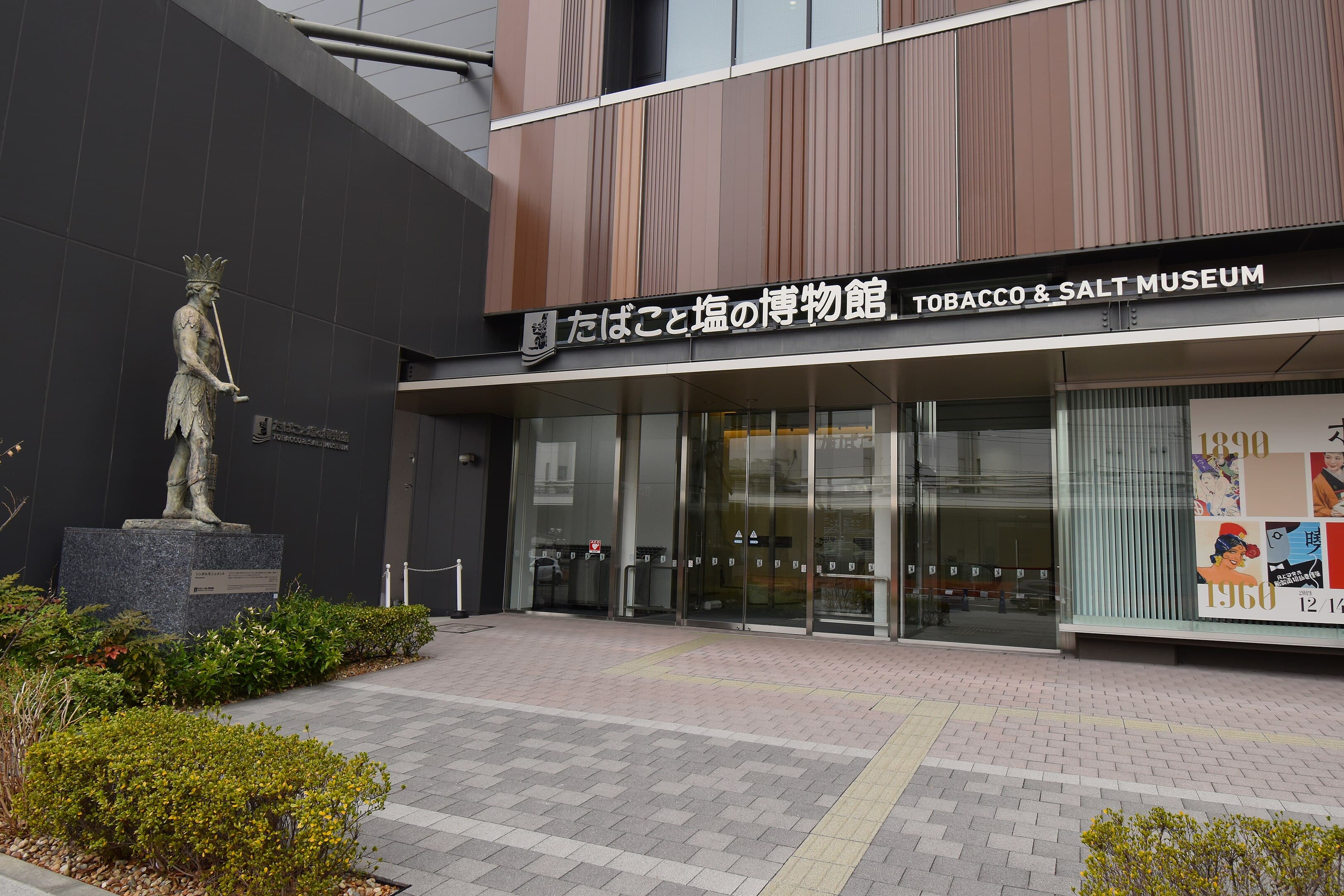
Tobacco and Salt Museum
たばこと塩の博物館- Oshiage<SKYTREE> StationKeisei Oshiage LineToei Asakusa LineTōbu Isesaki LineHanzōmon Line
- Walk 12 minutes
The Tobacco and Salt Museum in Sumida district explores two commodities that fundamentally shaped Japanese society. Originally established in Shibuya in 1978, the museum relocated to its current six-story building near Tokyo Skytree in 2015. The institution preserves the heritage of Japan's tobacco and salt monopolies, which operated from the Meiji era (1898 and 1905 respectively) until privatization in 1985 and 1997.
Salt Exhibition: Science and History
The second-floor salt exhibition traces production methods from ancient solar evaporation to modern ion-exchange membrane systems. Interactive displays demonstrate Japan's unique salt-making challenges due to its humid climate, showcasing the evolution from traditional agehama-style salt fields to mechanized operations.
Visitors explore salt's roles in food preservation, religious purification, and industrial applications through hands-on exhibits. Global specimens from Himalayan pink to Hawaiian black salt illustrate geological diversity, while microscopes reveal crystal structures. The exhibition addresses fundamental questions about salt and the sea from scientific, cultural, and linguistic perspectives.
Tobacco Collection: Cultural Transformation
The third floor houses over 30,000 tobacco-related artifacts chronicling the plant's introduction to Japan by Portuguese traders in the 1540s. The collection includes kiseru pipes, vintage cigarette packages, and ukiyo-e prints depicting smoking scenes across social classes. Displays trace the evolution from Edo-period pipes to 20th-century mass production, revealing how tobacco became embedded in Japanese culture.
Marketing materials and vintage advertisements demonstrate the industry's progression from regional producers to national brands. The exhibition examines cultivation techniques and how Japanese farmers developed distinctive tobacco varieties adapted to local conditions.
Educational Programs and Workshops
The museum regularly hosts hands-on workshops particularly popular with students. The "Salt Laboratory" offers instructor-led experiments including salt extraction from seawater, crystal growing, and chemical property demonstrations. Experience corners allow visitors to build charcoal batteries or grow salt crystals, making scientific principles tangible through practical activities.
Fourth-floor special exhibitions rotate throughout the year, exploring themes from ancient salt production archaeology to tobacco's diplomatic role. These temporary displays often feature international loans, providing global perspectives on commodity histories.
Visitor Experience and Facilities
The modern building features natural lighting and intuitive circulation routes across its floors. Multilingual support includes English translations and audio guides. Interactive elements cater to different age groups and learning styles, from children's hands-on experiments to detailed technical explanations for specialists.
Beyond public galleries, the museum maintains research archives for scholars and conservation laboratories preserving delicate artifacts. The facility serves as an educational resource for schools studying Japanese industrialization and trade history. The museum shop offers various Japanese salt varieties and educational materials.
The institution addresses contemporary relevance thoughtfully - tobacco displays acknowledge health implications while maintaining historical objectivity, and salt exhibitions integrate dietary health information. Digital initiatives include virtual tours and online collection access, ensuring broad accessibility.
At Hey Japan!, we strive to keep the places listed on our website as current as possible. However, it is important to note that location owners or management may make changes to their plans, including canceling events, altering opening times, or modifying admission requirements, without prior notice. To ensure that you have the most accurate information, we recommend checking official websites before visiting any location.
Last Updated:











